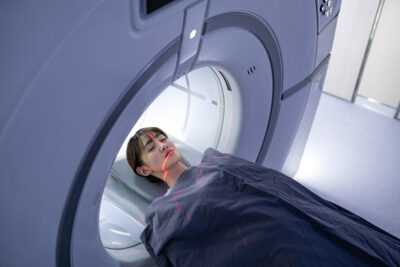By Babak Navi, MD, MS
Chief, Division of Stroke and Hospital Neurology; Associate Professor of Neurology and Neuroscience, Weill Cornell Medical College
In this study of patients with active cancers, 3.6% had asymptomatic, incidental acute ischemic stroke lesions on magnetic resonance imaging and had three times the risk of having a subsequent clinical stroke in the next month.
Naftali J, Barnea R, Leader A, et al. Association of acute incidental cerebral microinfarcts with subsequent ischemic stroke in patients with cancer: A population-based study. Neurology 2024;103:e209655.
Patients with cancer often undergo surveillance brain magnetic resonance imaging (MRI) studies to evaluate for cerebral metastases as part of staging. It is not uncommon for some of these MRIs to incidentally reveal acute cerebral infarcts. Such radiographic acute infarcts have several monikers in the literature, including silent brain infarcts, covert brain infarcts, or, as reported in the current study, cerebral microinfarcts.
In the general population, these incidental infarcts have been associated with an increased risk for recurrent symptomatic stroke and cognitive impairment. However, the clinical significance of these incidental acute infarcts in patients with cancer previously was uncertain.
The authors performed a retrospective cohort study using routinely collected electronic health data from Clalit Health Services, a health maintenance organization providing medical care to more than half the population in Israel. The study population included adult patients with lung, breast, colorectal, or pancreatic cancers diagnosed between January 2014 and April 2020 who underwent brain MRI scans within one year before or after their cancer diagnosis.
The indications for MRI scans were reviewed, and patients who had studies performed for neurological symptoms were excluded. The study exposure was an acute incidental cerebral microinfarct, defined as hyperintense lesions smaller than 5 mm on diffusion-weighted sequences. The primary outcome was an acute ischemic stroke or transient ischemic attack (TIA) during follow-up, determined through International Classification of Diseases (ICD)-9 diagnostic codes. Secondary outcomes included death and intracranial hemorrhage.
Patients were followed for outcomes until January 2023. Among 1,618 patients with active cancer who underwent 2,298 brain MRI scans, 59 (3.6%) were determined to have an acute incidental cerebral microinfarct. After adjusting for potential confounders, patients with an incidental cerebral microinfarct were about three times as likely to develop a subsequent symptomatic ischemic stroke or TIA. The median time between the index brain MRI and a subsequent cerebrovascular event was 26 days. Incidental cerebral microinfarcts also were associated with an increased risk for subsequent death, but not intracranial hemorrhage.
COMMENTARY
Naftali et al have shown that incidentally discovered acute cerebral microinfarcts, defined as diffusion-weighted imaging lesions smaller than 5 mm, are present in approximately 3% of patients with cancer who undergo surveillance brain MRIs. These microinfarcts are associated with a substantially increased risk for subsequent cerebrovascular events and death. These findings suggest that incidental cerebral microinfarcts should not be ignored in patients with cancer, but rather that patients harboring these lesions should receive urgent diagnostic evaluations and appropriate secondary stroke prevention interventions.
Future studies are needed to validate these findings in other populations and settings as well as to determine the optimal antithrombotic strategy for incidentally discovered acute ischemic stroke in patients with cancer.
The main limitations of this study were the retrospective design, the lack of data on anti-thrombotic medication use and cancer characteristics besides the primary site, restriction to four cancer types with an overrepresentation of lung cancer, and uncertain generalizability beyond Israel.

